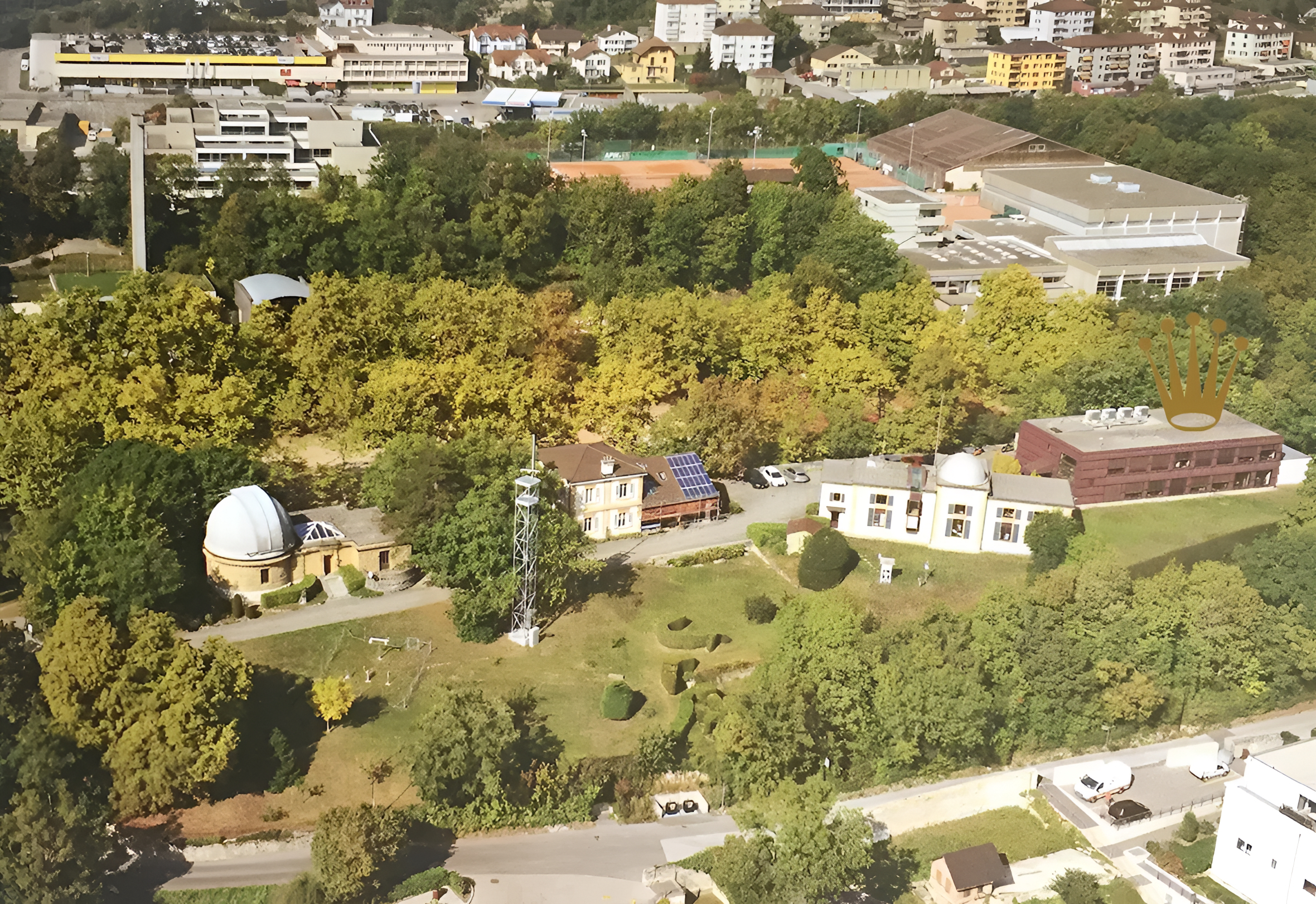Whether it’s a technological, scientific, or horological application, precision timekeeping is essential to our everyday lives.
Forward-thinking Swiss watchmaker, Rolex SA, is reinforcing this notion — not by throwing a launch party — but by taking action and investing millions in a new entity called Rolex Quantum SA.
Formed in May 2025, in collaboration with the Swiss Center for Electronics and Micotechnology (CSEM), Rolex Quantum SA’s base of operations is adjacent to the historic Neuchâtel Observatory (pictured).
“This new company was created following an excellent collaboration between Rolex and CSEM to develop a new generation of atomic clocks,” said Fabien Droz, Director of Rolex Quantum. “It will operate in Neuchâtel to benefit from close proximity to CSEM.”
Together, they have already presented developments at the Swiss Quantum Days in Arosa, Switzerland. In addition to providing access to decades of accumulated research and expertise. This location also reinforces Rolex’s commitment to further embedding itself in the canton of Neuchâtel, a region known for its excellence in high-precision horology.
“Quantum” refers to the smallest discrete unit of any physical property, such as energy or angular momentum. It’s the fundamental basis of quantum mechanics, which refers to the behavior of matter and energy at the atomic and subatomic levels. The term is also related to “quantum physics,” the field of study, and “quantum computing,” which utilizes supercomputers to make quantum mechanical computations.
Compared to quartz or cesium clocks, atomic clocks offer superior accuracy (underscored by the Boulder-based NIST team’s recent development of the world’s most accurate atomic clock), and Rolex Quantum SA aims to be at the forefront of the development and commercialization of ultra-precise optical atomic clocks.
While Rolex Quantum SA is not directly involved in producing or selling watches, it could potentially impact watchmaking precision and accuracy testing, as well as GPS (enhancing signal accuracy and positioning calculations), telecommunications (optimizing the synchronization of global networks), and time standards (supporting international timekeeping systems, including reference clocks).
For instance, according to ArcInfo, the Swiss Federal Institute of Metrology (METAS) may eventually adopt these atomic clocks to strengthen Switzerland’s national timekeeping system and collaborate with the International Bureau of Weights and Measures (BIPM) — the global authority for Coordinated Universal Time (UTC).
Sources:
https://lenouveaureveil.com/en/blog/2025/07/01/rolex-quantum-watches/
https://ggba.swiss/en/neuchatel-welcomes-rolex-quantum-and-the-future-of-timekeeping/
https://en.wikipedia.org/wiki/Swiss_Center_for_Electronics_and_Microtechnology
Photo by Ennio Bettinelli.


